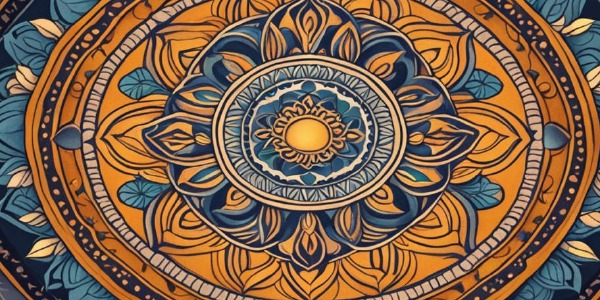From Paper to Sand: Exploring Varied Mandala Art Forms
The art of creating mandalas is a practice with deep spiritual roots, traditionally associated with various cultures across the world. These intricate designs represent the universe itself and are generally circular, symbolizing wholeness and unity. While paper has long been the standard medium for drafting these symbolic patterns, a growing number of artists and practitioners are exploring a diverse array of materials, including sand, to transmit their cultural and creative significance.
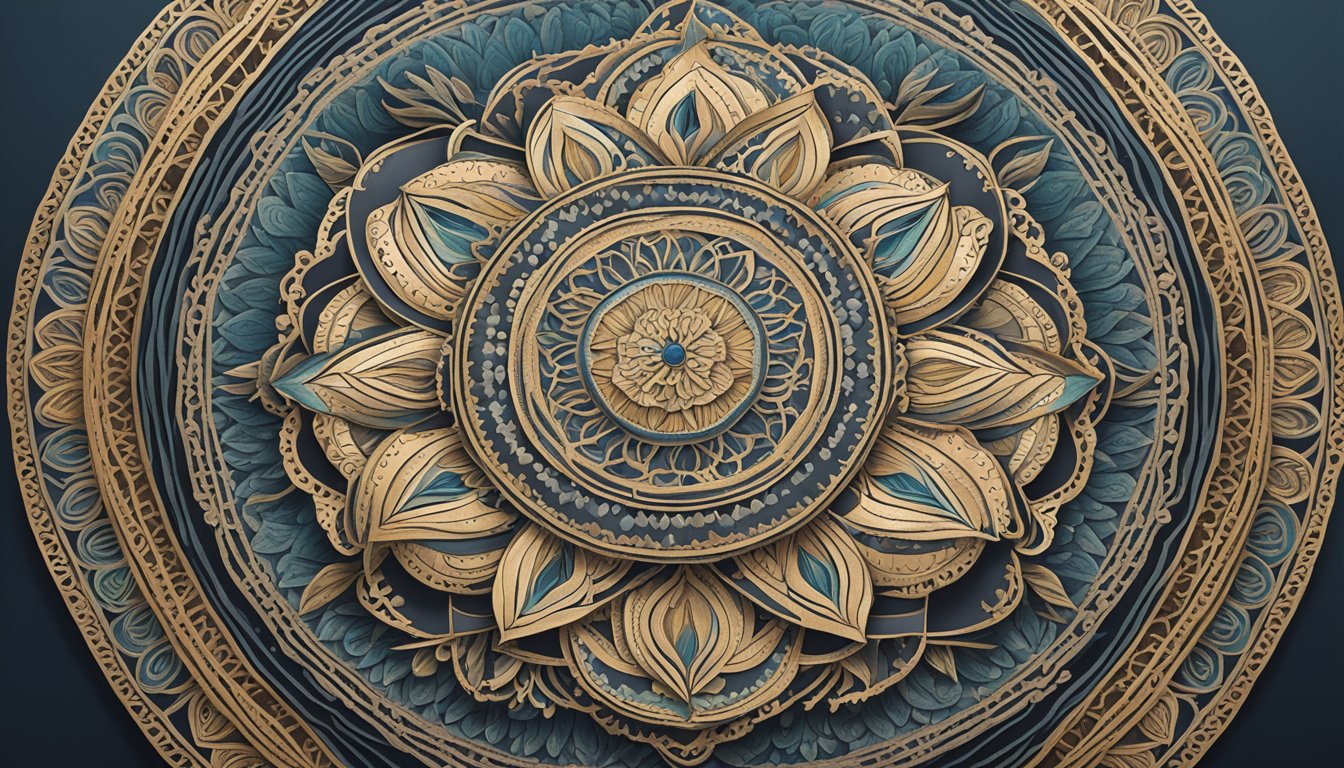
Sand mandalas, in particular, have gained international recognition due to their impermanent nature and the patience and skill required to craft them. The use of colored sand adds a dynamic and tactile element to the practice, emphasizing the Buddhist concepts of impermanence and non-attachment. As this art form transcends its traditional boundaries, it becomes adaptable in various contexts, from therapeutic practices to modern art installations, showing the versatility of materials that can be used for mandala creation.
Key Takeaways
- Mandalas represent cosmic unity and are expressed through various mediums.
- Sand mandalas highlight impermanence and require significant skill.
- The practice has expanded beyond spirituality into therapeutic and artistic realms.
The Essence of Mandalas
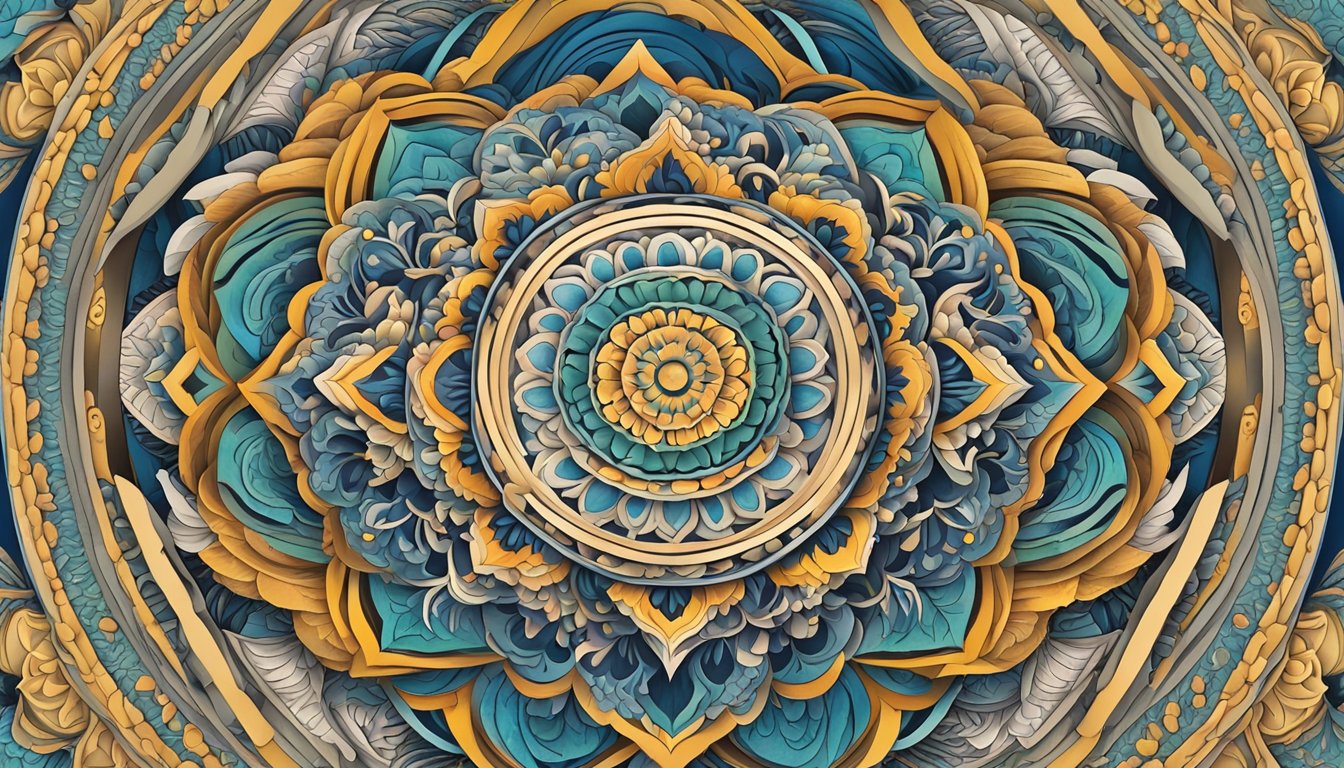
Mandalas are intricate works of art with profound significance, serving as a tool for meditation, a symbol of the universe’s symmetry, and a means of personal and spiritual growth.
Historical Roots and Cultural Significance
Mandalas hold a revered place in several traditions, notably Hinduism, Buddhism, and Jainism. Originating from the Sanskrit word for “circle,” mandalas represent the notion of wholeness and the cosmic order. They often feature concentric circles and other geometric patterns that symbolize the intricate balance of life and the universe.
- Hinduism: Mandalas serve as symbolic maps for meditation, embodying divine energy and gods.
- Buddhism: Used in various spiritual practices, they depict the ideal form of the universe and aid in the search for enlightenment.
- Jainism: Mandalas, known as ‘ranch-mandalas’, represent the cosmos and are utilized during specific holy rituals.
Psychological Perspectives
The Swiss psychiatrist Carl Jung recognized mandalas as a tool for achieving psychic wholeness. He posited that the act of creating a mandala helps to:
- Stabilize, integrate, and re-order inner life.
- Focus and center one’s self, bridging the individual’s inner and outer worlds.
Mandala art therapy has been adopted as an effective form of art therapy to encourage mindfulness, relieve stress, and help process emotions. The act of coloring or crafting a mandala can serve as a method for stress relief, leading individuals to experience feelings of relaxation and balance.
Symbols and Meanings in Mandalas
Each component of a mandala carries a distinct meaning, contributing to its overall power and purpose:
- Center Point: The starting point, signifying unity and the seed of potential.
- Circles: They represent the concept of eternity and continuity of life.
- Squares: Earthly stability and the four cardinal points.
- Triangles: Energy and direction, with an upward triangle symbolizing action, and downward for spiritual quest.
- Lotus: Purity and enlightenment, often seen in relation to the chakras or energy centers in the body.
In mandala art, the use of symmetry and repeating patterns can be a metaphor for the balance one seeks in life. Mandalas encourage a meditative state, drawing the viewer into a journey toward the center of the circle, representing a quest for unity and understanding within the self and the universe.
Materials and Techniques for Mandalas
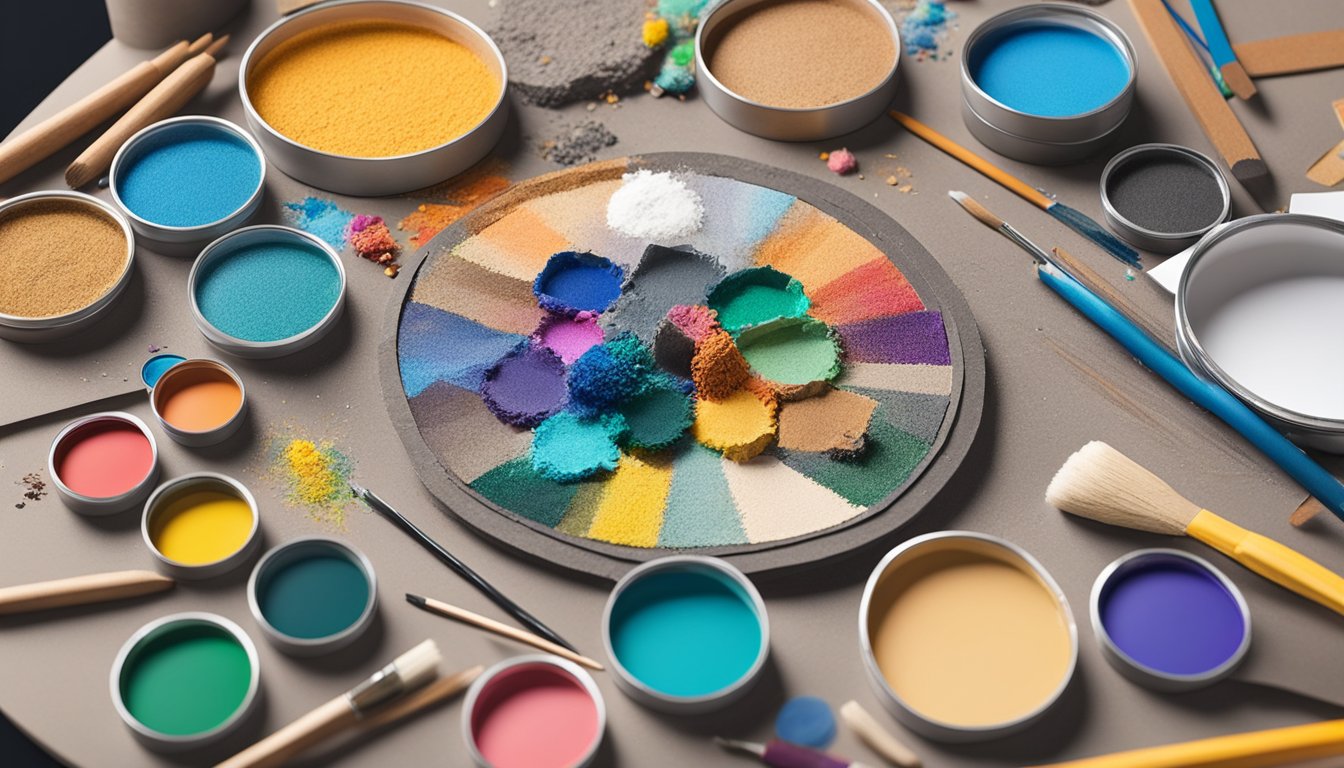
Creating mandalas can be a therapeutic art activity, providing a way for artists and beginners to focus their creativity. There are numerous materials and techniques available to cater to different preferences when it comes to mandala creation.
Paper Mandalas
Materials Needed:
- Paper: Typically, thick paper or cardstock to avoid bleed-through.
- Drawing Instruments: Pencils for sketching; fineliners or black ink for outlines; colored pencils, markers, or crayons for coloring.
- Supplementary Tools: A compass, protractor, and templates for symmetry and patterns.
Drawing Technique:
- Start with a faint pencil sketch using geometric guidelines.
- Outline with black ink or a fine-point marker.
- Apply color with the chosen medium, such as watercolors or colored pencils, working from the center outward.
Sand Mandalas
Materials Used:
- Sand: Colored sand is the primary medium.
- Tools: Chak-pur (a traditional tool for laying sand), funnels, and tubes.
- Base: A flat platform or tabletop canvas.
Creation Process:
- Design: Buddhist monks usually start with a sketch of geometric patterns and symbols.
- Execution: They use chak-pur filled with sand and run a metal rod on its grated surface to create a controlled flow.
- Rituals: The process includes certain rituals connected to offerings and the concept of impermanence, with the mandala eventually dispersed.
Other Mediums and Surfaces
Alternative Materials:
- Paints and Brushes: To create permanent mandalas on surfaces like canvas.
- Objects: Organic shapes such as stones, which can be doodled on with colorful paints or black markers.
- Digital Tools: Drawing software and styluses for creating digital mandalas.
Diverse Techniques:
- Incorporate glue to outline designs before adding gold leaf or glitter.
- Employ tape to create sharp lines and patterns on canvas or wood surfaces.
- Embrace doodle and craft techniques to design mandalas on fabric or walls.
Practical Guide to Creating Mandalas
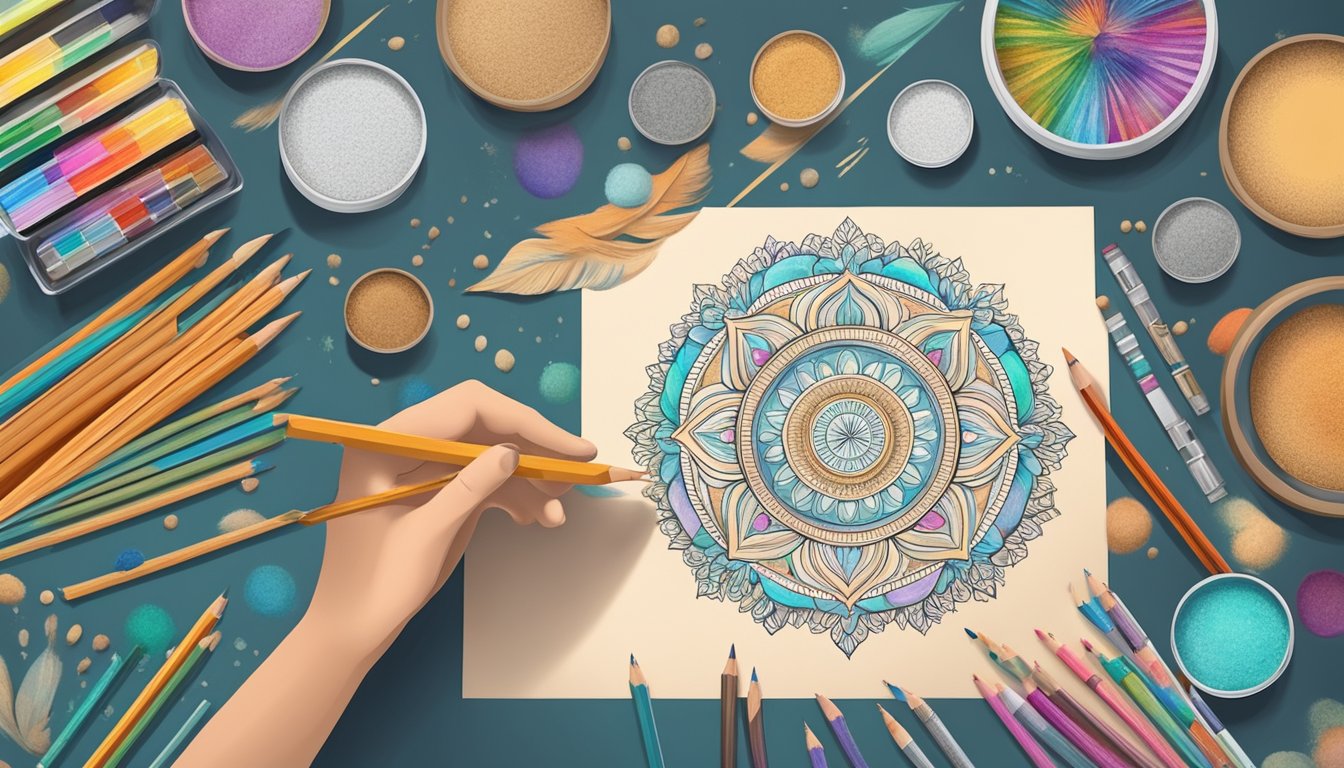
Creating mandalas is a craft that combines artistry and meditation, allowing for both creativity and relaxation. This guide provides beginners with tangible steps to start their journey into the world of mandala art design.
Step-by-Step Instructions
Choose Your Medium: Start with a simple material—paper for drawing or a sandbox for a more unconventional approach.
Prepare Your Space: Ensure the work area is clean and comfortable. Gather all your tools—markers, pencils, color pencils, or paints.
For Paper Mandalas:
Tool Use Pencil Sketch the initial design Fine Marker Outline the design for clarity Color Pencils Add color and vibrancy For Sand Mandalas:
Tool Use Sand Primary material Chak-pur Tool to place sand precisely Brush To adjust and smooth sand
Drawing the Mandala:
- Begin at the center with a dot or simple geometric shape.
- Expand outward with concentric rings of patterns, incorporating both geometric and organic shapes.
- Maintain symmetry for traditional mandala patterns.
Designs and Patterns
- Templates and Inspiration: Use mandala art design templates or find inspiration from nature for organic patterns.
- Creating Patterns: Alternate between different elements—petals, dots, waves, and geometric shapes to build complexity.
- Guidance for Beginners: Start with a simple mandala pattern and progress to intricate designs as skills improve.
Coloring and Decoration Tips
Selecting Colors: Choose a color scheme—warm, cool, or monochrome. Consider the emotional effect of colors.
Coloring Techniques: With markers or color pencils, practice smooth color transitions and shading to add depth.
Decorating Techniques:
- For Paper Mandalas: Use pastels for a soft touch or paints for a bold statement.
- For Sand Mandalas: Layer different colored sands and use a gentle touch to prevent mixing.
Mandalas in Modern Times
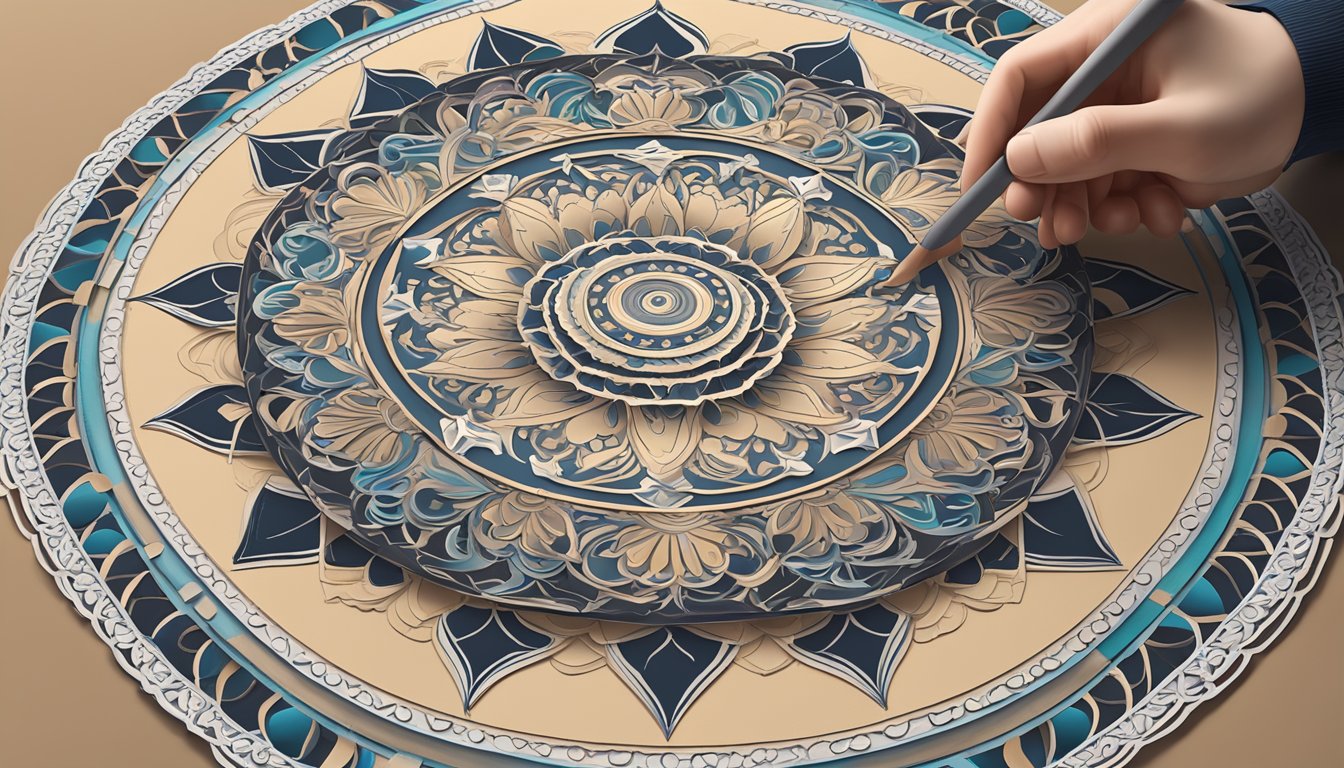
Mandalas have evolved into a contemporary symbol of peace and reflection. They are now integrated into a variety of modern practices, from art and community initiatives to therapeutic applications, as well as leveraging digital advancements for creation and education.
Art and Community Projects
Mandalas serve as a vibrant centerpiece for community engagements and art projects. They encourage collaboration and creativity, often resulting in large-scale creations that symbolize unity and diversity. For instance, community projects may involve groups of people coming together to design a mandala using natural elements like sand or leaves, a process which not only fosters community spirit but also promotes environmental appreciation.
- Ideas for Community Projects:
- Collaborative mandala art installations
- Public sand mandala demonstrations
- Interactive coloring events
Therapeutic Uses and Benefits
Therapists have identified mandalas as tools for art therapy, helping individuals express emotions and achieve stress relief and mindfulness. Coloring mandalas in books or constructing them from various materials can serve as a meditative practice, aiding in the management of stressful life situations. This creative expression allows for a non-verbal exploration of emotions, potentially unlocking the healing power of mandala art therapy.
- Benefits of Mandala Art Therapy:
- Stress and anxiety reduction
- Emotional expression and processing
- Enhanced focus and concentration
Digital Mandalas and Online Resources
The digital realm offers an expansive resource for mandala enthusiasts. Numerous websites and applications provide templates, instruction videos, and interactive coloring pages for those interested in exploring mandala art. This has made the creation and learning of mandala art more accessible, giving individuals the opportunity to design and share their work with a global audience. Digital tools have also made it easier for therapists to integrate mandala art into their practices, offering a range of options to suit different preferences and abilities.
- Online Mandala Resources:
- Step-by-step mandala drawing tutorials
- Printable mandala coloring pages
- Apps for creating and sharing digital mandala art
Frequently Asked Questions
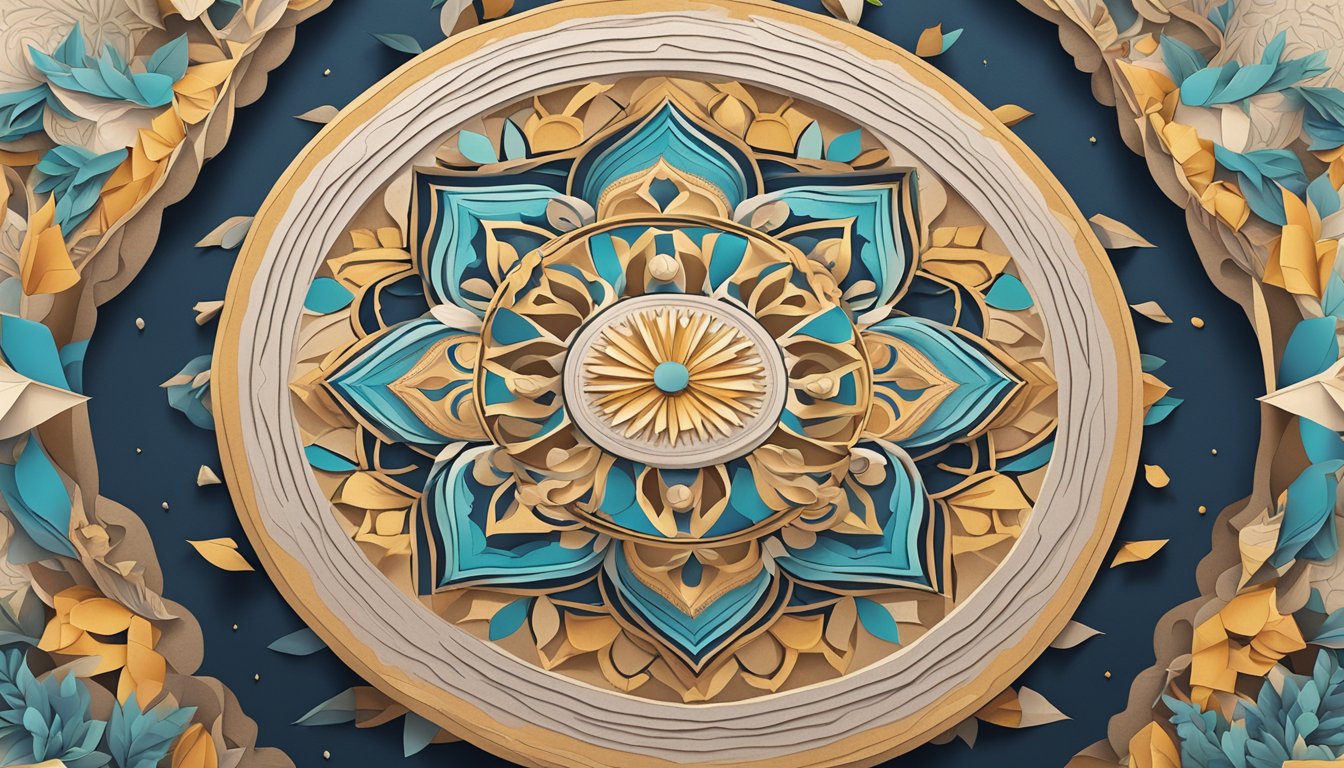
Engaging with mandala art invites a blend of creativity and technique. This FAQ section provides beginners and educators with practical guidance on creating and teaching mandala art across various mediums.
What are the simplest steps to start drawing a mandala for beginners?
Beginners can start by sketching a central dot, layering circles around it, and segmenting the circles into distinct sections with straight or curved lines. Within each section, repeating patterns or shapes can be drawn to slowly build the mandala outward from the center.
Where can I find free printable patterns for dot mandala art?
Free printable patterns for dot mandala art are available on various educational websites, arts and crafts blogs, and community platforms that specialize in mandala art. Libraries and public domain online resources are also good places to look for these patterns.
What are some effective lesson plans for teaching mandala art in studios?
Effective lesson plans for teaching mandala art in studios may include structured step-by-step instructions on grid creation, symmetry, and color theory, accompanied by hands-on practice sessions. It is beneficial to demonstrate techniques live and provide various examples of mandala styles for inspiration.
How can I incorporate mandala projects into my college art curriculum?
Incorporating mandala projects into a college art curriculum involves incorporating sessions on the historical and cultural significance of mandalas, technical workshops on design principles, and providing projects that encourage artistic self-expression through mandala creation.
What advanced techniques can be integrated into mandala art lessons?
Advanced techniques for mandala art lessons may include working with unconventional mediums like colored sand or digital tools, exploring three-dimensional mandalas, or applying complex geometrical calculations to create intricate designs.
Which art materials are most commonly used for creating detailed mandalas?
Commonly used materials for creating detailed mandalas are fine-tip pens, colored pencils, markers, and paints on paper, as well as sand, grains, or chalk on various surfaces. More intricate mandalas might incorporate gold leaf, gemstones, or digital software for precise designs.

